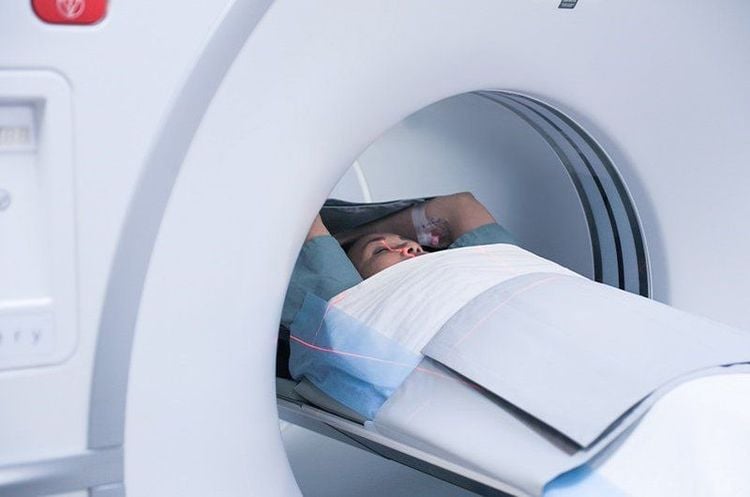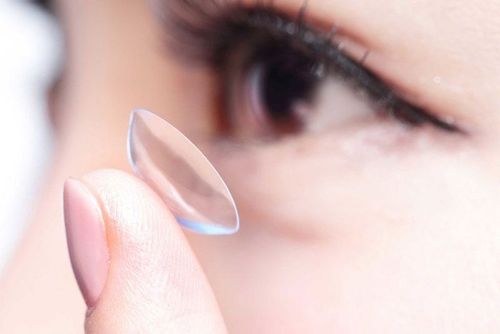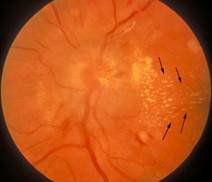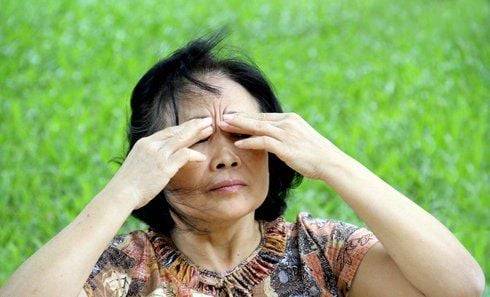This is an automatically translated article.
Endoscopic optic nerve decompression surgery is a method used to treat cases of vision loss or loss after trauma compressing the optic nerve (2nd nerve).
1. Overview of the 2nd cranial nerve
Each person has 12 pairs of cranial nerves, which originate from the brain, pass through the holes of the skull, branching into the muscles of the head, face, neck and internal organs. Each nerve has its own function and task. When they are damaged, they will cause specific diseases. Nerve No. 2 (or No. II) is an optic nerve that originates from cells in the ganglion cell layer of the retina, gathers near the posterior pole of the eyeball, goes behind the eyeball, through 2 holes. vision enters the skull. The end point to which the 2nd nerve goes is the optic nerve center in the cerebral cortex.
The optic nerve is responsible for transmitting images, sensations of objects and light to the brain. If the second nerve is atrophied, it will cause the patient to see objects as if looking through a bamboo tube. If there is a tumor pressing on the optic nerve, it will cause hemiplegia, only seeing one eye.

Sơ đồ 12 đôi dây thần kinh sọ não
2. Endoscopic surgical method to decompress nerve number II
Laparoscopic optic nerve decompression surgery is a surgical method to reduce orbital pressure to expand further, to open the optic nerve from the top of the orbit to the position of the optic interference. This method uses the endoscopic access to the orbit through sinuses such as frontal sinus, sphenoid sinus, maxillary sinus, and ethmoid sinus to treat many diseases related to the orbit, lesions located in the orbital nerve axis. or related to the inner orbital walls such as: reducing pressure in the eyeball, reducing symptoms of bulging eyes, improving symptoms due to optic nerve compression.
2.1 Indications/contraindications
Indications:
Compression injury after trauma such as compression fracture, intraocular hematoma; Injuries caused by compression tumors such as meningiomas, fibroids, osteochondrosis,...; Injuries from the outside that press on them such as neuromas, fibroids,...; Eye damage in Graves' disease (hyperthyroidism). Contraindications:
The wall lesions compress the outer wall of the orbit; Acute sinusitis due to bacterial infection. 2.2 Preparation for surgery
Personnel: Neurosurgeon, ear - nose - throat, eye specialist; Facilities: Endoscopy system with camera and high-definition screen, intraoperative video and image recording system, led light source, transnasal sinus surgery kit, skull base surgery instruments, drilling system high-speed diamonds, Navigation system, hemostatic devices, anesthetics, skull base materials,...; Patients: Clinical examination, specialized examination of eyes, endocrinology, ear - nose - throat before surgery; cranial magnetic resonance imaging, CT scan to evaluate the structure of the base of the skull; be explained about the purpose and process of surgery; Medical records: In accordance with surgical medical records.

Bệnh nhân khám lâm sàng và chẩn đoán bằng hình ảnh trước phẫu thuật
2.3 Surgical procedure
Check medical records in accordance with regulations; Checking the patient: Right person, right disease; The patient lies in the supine position, with the head fixed, keeping the head tilted toward the surgeon 20°, gauze impregnated with naphazoline 2% or adrenaline 1:1000 10 minutes before surgery; Using the endoscope into the ethmoid sinus, cut off the anterior ethmoid. Then use the trigger and the grinding chamber to remove the bone, exposing the inner wall of the eye socket; Resection of the inner orbital wall to the optic canal: Using a low-traumatic grinding drill, approaching the lesion site and treating according to the lesion. 2.4 Post-operative monitoring
Closely monitor the patient's vitals such as pulse, temperature, blood pressure, respiration; Use antibiotics after surgery about 1-2 weeks; Withdraw the nasal meche after 48 hours; Irrigate and clean the patient's nose daily with physiological saline. 2.5 Management of complications after surgery
Nosebleed: Insert meche to stop bleeding and if it is not effective, surgery to stop bleeding; Cerebrospinal fluid leak: Treatment is lumbar puncture within 4-5 days until the leak is gone. Diamox diuretics should be used for patients with 250mg X 4 tablets per day, so that the patient can rest in bed, avoid coughing and sneezing, eat soft foods, and avoid constipation. It is possible to repair the fistula as indicated; Infection: Treat by using antibiotics according to the antibiogram if sputum culture, blood culture, and cerebrospinal fluid detect bacteria. Patients who are assigned to perform endoscopic optic nerve decompression surgery need to strictly follow the instructions of the doctor for the successful implementation of the technique, minimizing the risk of encountering risks. catastrophe.
To register for examination and treatment at Vinmec International General Hospital, you can contact Vinmec Health System nationwide, or register online HERE













